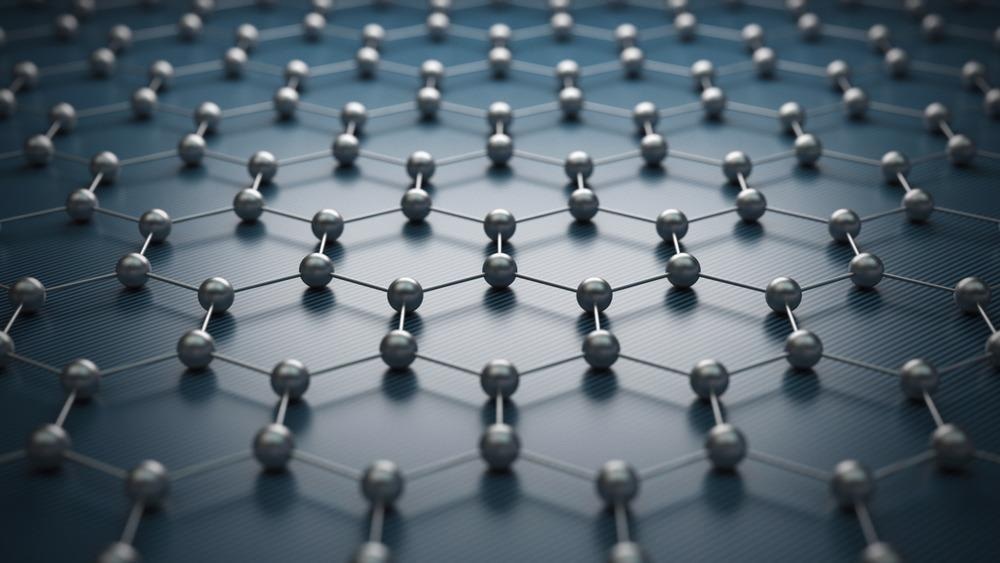
Image Credit: koya979/Shutterstock.com
Nanographene is a material that is expected to bring significant improvements in various fields, such as solar cells and nanodevices. It has many advantages but has traditionally been challenging to synthesize. Scientists from the University of Tokyo have discovered a way to better control its fabrication by studying its underlying chemistry.
Graphene and its Limitations
Graphene is the first two-dimensional material available to science. It consists of a single layer of carbon atoms arranged in a honeycomb lattice. Since its discovery in 2004 by Prof Sir Andre Geim and Prof Sir Kostya Novoselov, for which they were awarded the Nobel prize in physics in 2010, graphene has revolutionized material science and condensed matter physics.
Although graphene has many advantages, it also has its limitations, mostly due to its infinite planar hexagonal lattice structure. One such example is the tendency of aggregation between layers. Structural defects in its lattice that break this infinite structure change its properties and may be the route to overcoming its limitations.
What is Nanographene?
One of the candidates to achieve this is nanographene. Singular graphene units are called nanographene; nanographenes are graphene fragments with a diameter of <100 nm, while graphene should exceed 100 nm in both directions.
Nanographene is tailored to specific functions, such as particular electronic, optical, and magnetic properties. This makes it a very suitable potential candidate for the production of nanodevices. The shapes, sizes and even edges on nanographene influence their properties.
Production of Nanographene
The production of nanographene is quite complicated: it is done by a process called dehydrogenation.
Dehydrogenation is achieved by selectively removing hydrogen atoms from organic molecules consisting of carbon and hydrogen. It takes place on a metal surface, which acts as a catalyst; a catalyst is a material that enables or speeds up a reaction.
However, since the surface is very large compared to the targeted molecules, nanographene production is very challenging. Understanding better the catalysis process and having a more precise method to control it could be the path to overcoming the difficulties involved in nanographene production.
Using AFM for Easier Nanographene Production
Shiotari and their team developed an efficient method that offers enough precision to control the catalysis process using an atomic force microscope (AFM). An AFM is a scanning probe microscope with a resolution of a fraction of a nanometer. They image almost any type of surface, including polymers, composites, and biological samples.
An AFM is used to measure different forces, including adhesion strength, magnetic forces, and mechanical properties. AFM consists of a sharp tip attached to a cantilever. The tip moves in response to tip–surface interactions, and the change in distance between the tip and the surface is measured to obtain information for the sample.
The AFM tip can be used for manipulating atoms as well as detecting their characteristics. Shiotari’s group discovered that it could also be used to break carbon-hydrogen bonds in organic molecules without additional thermal energy. They believe that this would help achieve an easier and more controlled way of fabricating nanographene.
The group has used a low-temperature non-contact AFM metal tip to activate dehydrogenation for PAH-forming cyclodehydrogenation locally. Cyclodehydrogenation is a reaction in which cyclization is accompanied by dehydrogenation.
Polycyclic aromatic hydrocarbons (PAHs) and nanographene are nanoscale sp-2-hybridized-carbon materials. They exhibit similar electronics, optical and magnetic properties.
As the group successfully demonstrated a metal-tip catalyzed dehydrogenation, for both benzonoid and nonbenzonoid PAHs, this suggests that the method could also be applied for the catalysis in nanographene synthesis. This shows that the AFM tip can pull hydrogen atoms from different materials. The method can be used for the commercial production of nanographene.
Applications of Nanographene
Nanographene finds many applications in people’s everyday lives. For example, it can be used as a nonlinear optical material for optoelectronic devices. Additionally, it can find applications as a gas sensor and gas detector because of graphene’s property to adsorb gas molecules.
Nanographene is also a good candidate for a conductive layer perovskite solar cells, improving their efficiency and leading to more accessible green energy production.
References and Further Reading
Geim, A. K. and Novoselov, K.S. (2007) The rise of graphene. Nature materials. https://doi.org/10.1038/nmat1849
Shiotari, A., Hamada, I., Nakae, T., Mori, S., Okujima, T., Uno, H., Sakaguchi, H., Hamamoto, Y., Morikawa, Y., and Sugimoto, Y. (2020) Manipulable Metal Catalyst for Nanographene Synthesis. Nano Letters. https://doi.org/10.1021/acs.nanolett.0c03510
Berger, M. Graphene Description. [Online] Nanowerk https://www.nanowerk.com/what_is_graphene.php (Accessed on 16 December 2020).
University of Tokyo (2020) Tips for making nanographene: A new and efficient way to create nanographene for power and display devices. [Online] ScienceDaily. www.sciencedaily.com/releases/2020/11/201111092932.htm (Accessed on 16 December 2020).
R., S. S. (2013) Techniques for characterizing the structure and properties of polymer nanocomposites. Environmentally Friendly Polymer Nanocomposites. https://doi.org/10.1533/9780857097828.1.74
Dai, Y., Liu, Y., Ding, K. and Yang, J. (2018) A short review of nanographenes: structures, properties and applications. Molecular physics. https://doi.org/10.1080/00268976.2018.1433881
Disclaimer: The views expressed here are those of the author expressed in their private capacity and do not necessarily represent the views of AZoM.com Limited T/A AZoNetwork the owner and operator of this website. This disclaimer forms part of the Terms and conditions of use of this website.